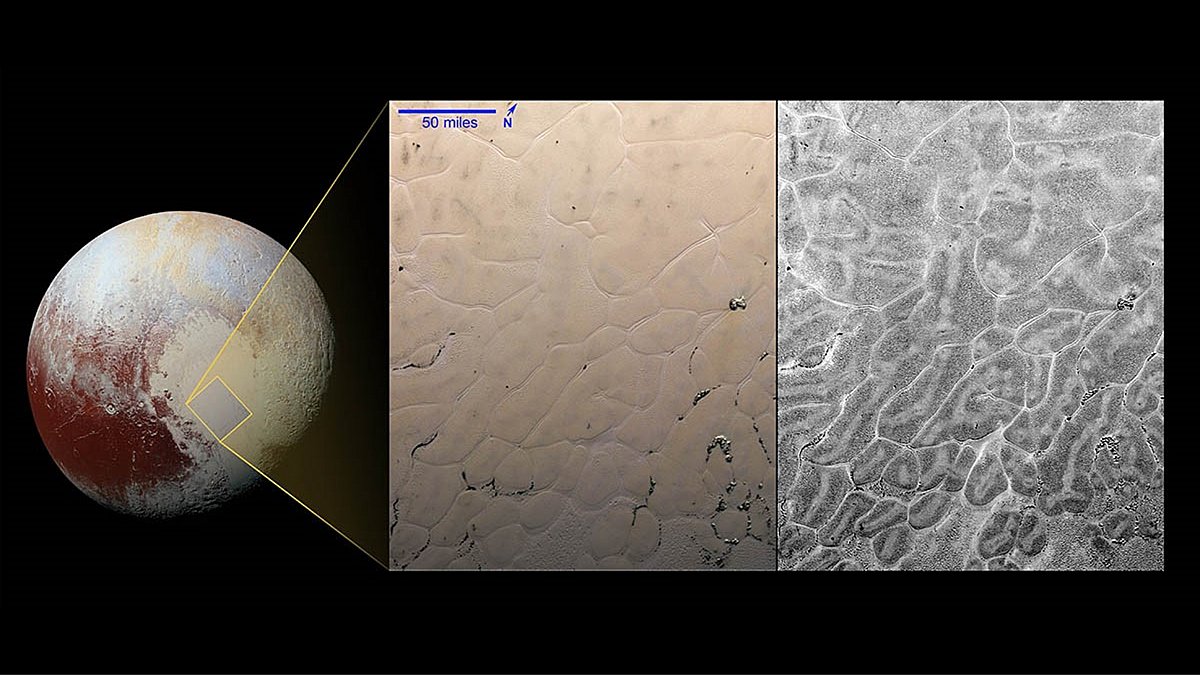
Sputnik Planitia (right), at the surface of the dwarf planet Pluto (left), is a nitrogen ice glacier whose surface is split in a network of polygonal structures. © NASA
During its flyby of Pluto, in July 2015, the NASA's spacecraft New Horizon revealed that the surface of this dwarf planet is geologically very complex. Among the most interesting features is a nitrogen ice glacier, Sputnik Planitia, whose surface is split in a network of polygons of ~ 20-40 km in size, a structure which is characteristic of the dynamic topography induced by convection. Kenny Vilella (IES postdoc from 2015 to 2019) and Frédéric Deschamps (IES research fellow) investigated the dynamics of Sputnik Planitia using 3D-Cartesian simulations of thermal convection (Vilella and Deschamps, JGR Planets 2017). An important conclusion of their study is that the polygonal patterns observed at the surface of Pluto are inconsistent with bottom heated convection, as previously thought, but may instead result from volumetrically heated convection. According to this scenario, convection may be driven by successive phases of heating and cooling of the glacier triggered by long term variations of Pluto's orbital parameters. As Pluto's surface temperature increases Sputnik Planitia heats up by conduction and remains dynamically stable. As surface temperature starts decreasing, the glacier releases the heat it stored during the heating phase, and becomes unstable, i.e. it is cooling down following a convection process.
Full Article:
Kenny Vilella, Frédéric Deschamps, (2017), Thermal convection as a possible mechanism for the origin of polygonal structures on Pluto's surface, Journal of Geophysical Research: Planets 122(5), 1056-1076
https://doi.org/10.1002/2016JE005215